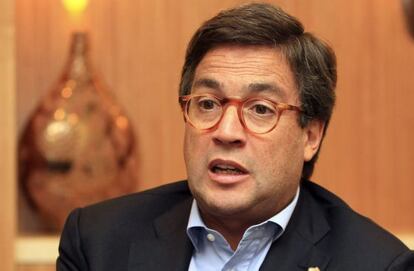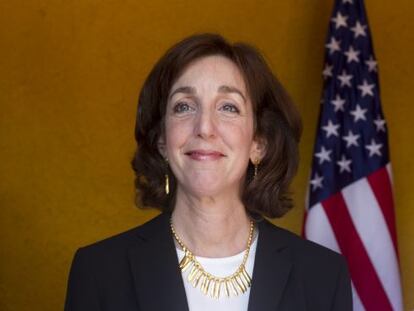Mesoamerica: A world-class logistics corridor?
Latin America’s strong economy is turning us into an attractive consumer market

This week I had the privilege of examining the stunning expansion work taking place at the Panama Canal. Just on the Atlantic side, I came across 53 cranes and 7,000 workers. When the new canal is finally inaugurated in 2015, more than four million cubic meters of concrete and steel will have been used – an amount equivalent to 19 Eiffel Towers.
But even more impressive are the rippling effects that the canal’s expansion is having on the rest of the world.
Nations such as Costa Rica, Colombia, Peru, Bahamas and Cuba have joined the race to expand and modify their ports to compete for bids to become cargo transshipment points for the gigantic ships that will pass through the new canal. In the United States, Washington estimates that port authorities across the nation are investing up to $8 billion annually for this same purpose.
Industries as diverse as Chile's copper mining sector, Brazil’s steel mills, and Chinese appliance manufacturers are all adjusting their accounting books to take into consideration the new costs, time and supplies. And everywhere else, visionary entrepreneurs are looking to Panama and its neighbors as possible hosts to produce and distribute products in markets that today are not profitable.
This all creates an historic opportunity to build a world-class logistics corridor running from Mexico to Colombia. And three trends favor this undertaking.
First, Latin America’s strong economy has given us an increasingly attractive consumer market. It is estimated that today, 172 million Latin Americans belong to the middle class. If we continue to grow at the current rates, that figure could double in 2030. In addition, the average income in Latin America is much higher than in other emerging regions. In 2011, the purchasing power per person in our region was nearly $12,000, compared with $8,300 in China.
This is one reason why many multinationals are going to build factories and service centers throughout Mesoamerica with the objectives of not only supplying the United States but also South and Central America.
The second favorable factor is the improvement in our competitive position when it comes to exporting manufactured goods. The sustained increase in fuel prices, the time required to ship from Asia, and the impact all this has on inventory management weigh increasingly on producers’ cost analyses. This is compounded by the rapid growth of labor costs in China, which in 2012 exceeded those of Mexico in some sectors.
Mexico is undoubtedly the principal beneficiary of this phenomenon, which can be seen by the rise in exports of automobiles, aerospace components, medical devices and appliances.
But the factors that are strengthening Mexico’s competitiveness can also benefit the rest of Mesoamerica, if we are able to accelerate physical integration. Thanks to the Central American Electrical Interconnection System (SIEPAC), Mesoamerica now has a robust electrical infrastructure from Mexico to Panama and that will soon include Colombia. This will create a market for regional electricity and investments in new plants to supply the demand that is expected.
Similarly, the Inter-American Development Bank has been promoting the Pacific Corridor initiative to expand and modernize 3,200 kilometers of road that now accounts for 95 percent of Mesoamerica’s land freight. The 27 stretches of this project are nearly ready for bidding, and, along with programs to reduce paperwork at border crossings, will produce huge savings on time and transportation costs.
There is abundant private sector money interested in investing in these projects. The only things that are needed are decisions, coordination and clear rules. The window of opportunity created by the expansion of the Canal will be brief. If they cannot find a logistical ecosystem, energy and world-class transportation systems in Mesoamerica by 2015, investors will look elsewhere.
Luis Alberto Moreno is president of the Inter-American Development Bank.
Tu suscripción se está usando en otro dispositivo
¿Quieres añadir otro usuario a tu suscripción?
Si continúas leyendo en este dispositivo, no se podrá leer en el otro.
FlechaTu suscripción se está usando en otro dispositivo y solo puedes acceder a EL PAÍS desde un dispositivo a la vez.
Si quieres compartir tu cuenta, cambia tu suscripción a la modalidad Premium, así podrás añadir otro usuario. Cada uno accederá con su propia cuenta de email, lo que os permitirá personalizar vuestra experiencia en EL PAÍS.
¿Tienes una suscripción de empresa? Accede aquí para contratar más cuentas.
En el caso de no saber quién está usando tu cuenta, te recomendamos cambiar tu contraseña aquí.
Si decides continuar compartiendo tu cuenta, este mensaje se mostrará en tu dispositivo y en el de la otra persona que está usando tu cuenta de forma indefinida, afectando a tu experiencia de lectura. Puedes consultar aquí los términos y condiciones de la suscripción digital.
More information

“Cuba is changing”
Urdangarin asked king to lean on sporting figures such as Ecclestone
Últimas noticias
The complicated life of Francesca Albanese: A rising figure in Italy but barred from every bank by Trump’s sanctions
From digital curfews to blocking apps: How technology experts protect their children online
Why the price of coffee has skyrocketed: from Brazilian plantations to specialty coffee houses
Confined to a Cuban hospital: When electricity is a matter of life or death
Most viewed
- Pablo Escobar’s hippos: A serious environmental problem, 40 years on
- Why we lost the habit of sleeping in two segments and how that changed our sense of time
- Trump’s obsession with putting his name on everything is unprecedented in the United States
- Charles Dubouloz, mountaineering star, retires at 36 with a farewell tour inspired by Walter Bonatti
- The Florida Keys tourist paradise is besieged by immigration agents: ‘We’ve never seen anything like this’








































